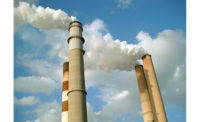Clean Energy
Work Starts on World's First $1B Clean Energy Island in North Sea

Site investigations have started in the North Sea for the world's first energy island, an estimated $1.1-billion project that will link 3 GW of power from about 200 offshore turbines in its first phase, say the project's Danish developers.
To be built under a public private partnership, the island will be used to distribute electricity directly to nearby countries and, potentially, to produce green fuels and could be scaled up to 10 GW, says Poul-Jacob Vilhelmsen, chief project manager at Energinet, Denmark's energy grid operator.
At full development, the estimated 30-acre site would have capacity more than five times greater than all of Denmark's current offshore wind farms now are producing, say the country's energy officials. The Danish Energy Agency on July 1 selected Sweden-based engineering firm Sweco as technical advisor under a four year contract.
The energy agency plans to start bidding for the P3 contract next year and announce the winner at the beginning of 2023. Civil construction could be completed by decade's end. Wind turbines expected in the first phase will be developed separately.
Having this year completed an online dialogue with interested parties on characteristics of the P3 contract, the energy agency plans to establish a procurement strategy later this year.
Because the island is classed as critical infrastructure, the government will hold at least 50.1% of the company created for its development. For the same reason, Energinet will be responsible for the island’s core installations.
Environmental studies are scheduled during the next two years, during which the P3 company will procure the island’s construction contract with an award expected in late 2024.
Building the North Sea and other offshore hubs represent “a paradigm shift in the approach to offshore wind power,” said Denmark's energy minister Dan Jørgensen last year at the launch of the nation's first first climate plan, which aims for national carbon neutrality by 2050.
Rather than the current practice of linking individual wind farms to different countries, the island will act as a central distribution hub as well as a production base for green fuels, explains Energinet's Vilhelmsen. "You locate wind farms where the wind potential is highest and connect directly ... to the relevant country,” he adds.
"No doubt, there lies a great business potential for Denmark and Danish companies in demonstrating how to establish such a ground-breaking offshore wind project and produce sustainable fuels in large scale," says Jan Behrendt Ibsø, senior vice president for renewables at Cowi A.B. The design firm is advising the energy agency and Energinet on the North Sea island planning.
"I expect several more [island hubs] will follow in the long term," says Vilhelmsen. "It’s only a matter of timing."
The European Commission estimates that 300 GW of offshore wind will be needed to make Europe climate neutral by 2050. That would require adding 275 GW to last year's capacity, according to the trade body Wind Europe.






